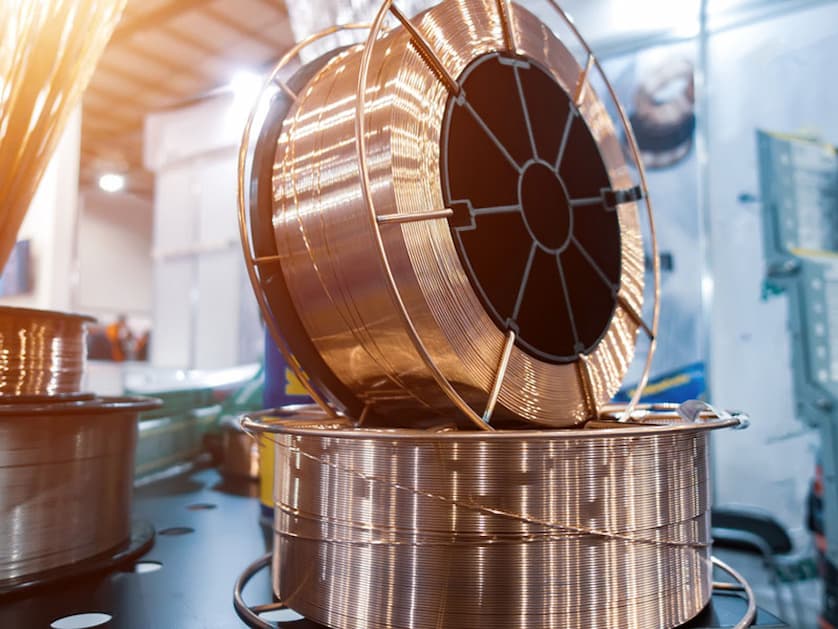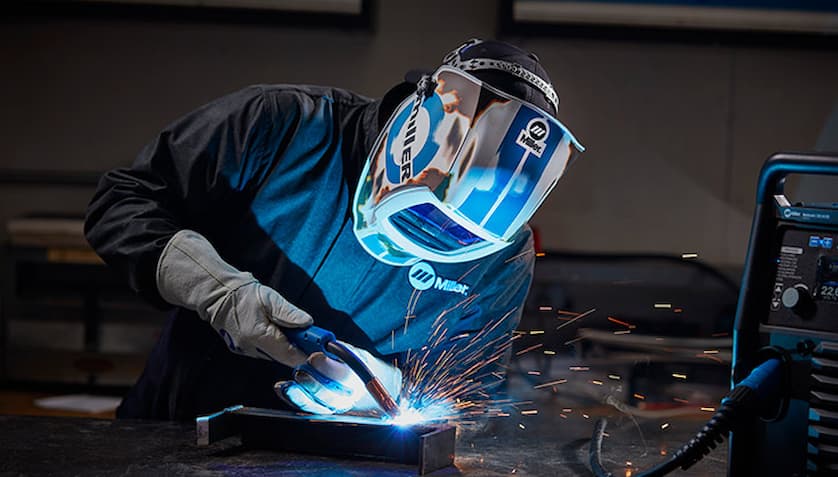There are dozens of welding processes, but the most common, like stick, MIG and TIG welding utilise welding rods or wires to create and maintain an electric arc to heat and then fuse the workpieces together. Some of these also perform double duty, by acting as filler material to strengthen the weld., while others generate higher temperatures to enable the whole process in the first place. The wide variety of welding electrodes, wires and rods, the names these materials go by, means welders need to carefully select their gear if stronger and cleaner welds is the end goal. This means some prior knowledge when setting out to buy welding wires.
Contents
Basics of Welding Wires

Welding wires, rods and electrodes are the pieces of metal that go in the weld gun and create the electric arc to melt and join the metals. They come either as consumable wires or rods that form part of the weld pool, like you’d find in stick and MIG welding, or non-consumable electrodes used in TIG welding to create the high temperatures needed to melt metals. Choosing the right welding wire or rod then largely depends on the process, and then specifics of the metals.
Main Types
Consumable Wires and Electrodes
These are the most common and form part of the weld. Consumable wires and rods come in different configurations. Bare electrodes for instance have no flux coating, essentially the outer layer that shields the welded workpiece from oxidation and external contaminants, and helps protect the metals to produce stronger and cleaner welds. Bare wires and rods have limited application, mainly seen when welding wrought iron and alloyed steels. Flux-cored variants can have protective layers of varying thicknesses. Those with light coatings are mainly used to stabilise the electric arc for welds with minimal slag or weld spatter.
More heavy-duty application require wires and rods with medium or heavy coatings, are used to prevent deformation or cracks in thicker metal pieces, like welds used in large structural element such as bridges. Heavy coated fluxes additionally help with working speed, have the best protective properties and can be optioned in cellulose or mineral coats. Cellulose helps the arc penetrate deeper in thicker metals, while mineral coatings reduce impurities and produce cleaner welds. This also means less post processing.
Non-consumable Electrodes
TIG welding is favoured for high precision and very strong welds. Here welding rods don’t melt and form part of the weld, but are used to get higher temperatures in the electric arc and minimise contaminants. Different material combinations, based around either pure tungsten or tungsten oxides such as thorium, cerium, lanthanum and zirconium produce different results and are used with different metals and workpieces of varying thicknesses.
Thoriated rods are some of the more widely used, help stabilise the arc and operable with welders at higher amperages to get extremely neat welds in aluminium, stainless steel, copper and copper alloys like brass and bronze. TIG welding and non-consumable electrodes are also the few ways to fuse metals with very high melting points, like titanium and engineered nickel alloys.
Buying Considerations and Electrode Classifications

To navigate your way through all the options, a classification system helps you buy welding wires and rods that are suitable for the metal that you’re welding, the overall thickness of the workpiece and the settings where and how welding is done. Charts have been configured to also help with amperage and polarity in welding machines.
A system of numbers and letters provides all the info you need. These inform welders whether wires used for MIG welding or rods in stick and TIG welding have a flux core or not, the type of coating, whether the materials are suitable for horizontal, neutral or vertical welding, and if AC or DC current is preferred for creating the arc. Additional information relates to the depth rods and wires penetrate the weld pool, and the rated tensile strength the weld has once cooled.
As an illustration, one of the most common rods used in stick welding, 6011, has a tensile strength of 60000 pounds per square inch (first two digits), can effectively be used in all welding positions (the third number), and has a thick cellulose potassium flux with increased manganese content to shield from outside gases, air and contaminants. The last number also says that the rod can be used with both DC and AC polarity.
Other Considerations
Buying the right rods and wires also means you’ll be aware of the specifics of the metal, the condition of the workpiece, and the length and thickness of the wire or rod. These welding essentials are often of the same or similar materials as the base metals, so when welding steel, you’ll also be looking at steel or alloyed steel rods and wires. Moreover, different types of electrodes handle workpieces with visible rusting or dirt buildup differently. This can affect the heat generated in the arc and the overall strength of the weld and its appearance. Lastly, electrode thickness determines the overall amperage (and hence heat in the arc), while lengths in MIG welding wire impacts work time and convenience with fewer spool changes.
With the provided guidelines, choosing the right wire or rods for your next welding project will be easier, and you’ll get strong, clean welds regardless of what you’re working on. On a related note, where joint strength is not as important, and when fusing different materials, consider using the range of brazing rods, available in the same stores selling wires, rods and welding supplies.











